Vatican Museums. Part 1.
"... Every day thousands of people visit the Vatican Museums... This makes one wonder: who are these visitors? They represent a great diversity of humanity. Many of them are not Catholics, many are not Christians at all and maybe not even believers. All this makes us reflect on the extraordinary responsibility entrusted to this institution from the point of view of the Christian message...” - Pope Benedict XVI
Yes, of course, Pope Benedict XVI understood everything correctly. Historical and artistic treasures of world famous churches and museums (Michelangelo's Sistine Chapel, Raphael's Stanzas, works by Caravaggio and Leonardo in the Pinacoteca. Laocoon in the Octagonal Court, Arrian in the Pius Clement Museum, Map Gallery and Beato Angelico in the Nicollin Chapel, Matisse and Rouault in the Collection of Contemporary Religious Art, Etruscan and Egyptian rarities from the collections of Gregory XVI, African masks and ritual pies of Papua in the Missionary Ethnological Museum), all this and much more was created, collected and preserved to give even greater the shine of Rome, the Eternal City and the capital of the Universal Church.
The Vatican Museums are a complex complex of exhibitions visited every year by almost four million tourists from all over the world. Currently there are 23 museum-exhibition routes 7 kilometers long.
During the reign of Pius XI, as is known, the Concordat was signed between the Vatican and Italy and a city-state was established. (1929) In view of this, it became necessary to limit the circulation of visitors throughout the Vatican, and, therefore, to create special entrances for access to the Museums from Italian territory. For this purpose, a passage through the wall was erected in the form of a spiral parapet, designed by the architect Giuseppe Momo (1875-1940) and decorated with bas-reliefs with papal coats of arms by the sculptor Antonio Mariani (1886-1963).

On the eve of the Great Jubilee of 2000, under John Paul II, it was decided to build a new entrance, the architecture of which would emphasize the openness of the Vatican Museums to the world at the beginning of the new millennium, but at the same time, a close connection with the past, and in particular with the old entrance Giuseppe Momo.
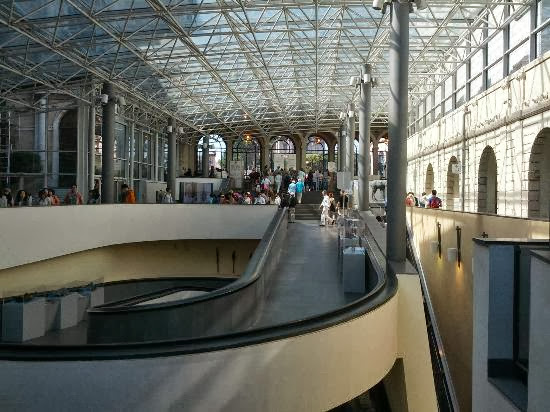
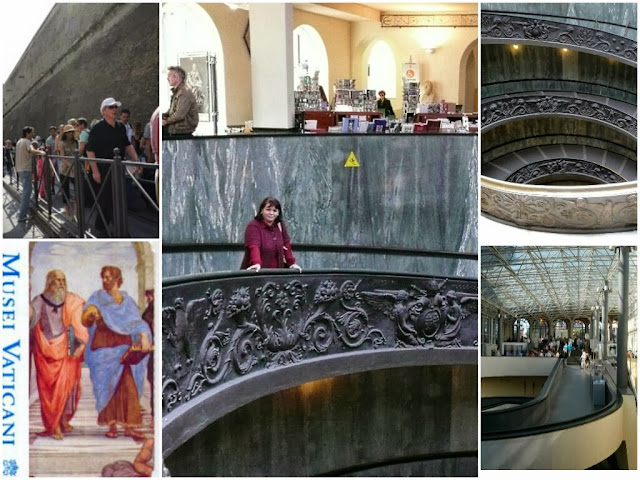
In the spacious atrium of the entrance rises a sculpture by Giuliano Vangi, symbolizing the main idea of the reign of John Paul II: one of the bas-reliefs depicts a smiling John Paul II, who supports the figure of the Man - the symbol of all Humanity - at the very moment when he breaks away from the marble block, taking shape and taking over surrounding space. The title of the work is “Cross the Threshold of Hope”, with faith and confidence in the future to cross the threshold of the third millennium.
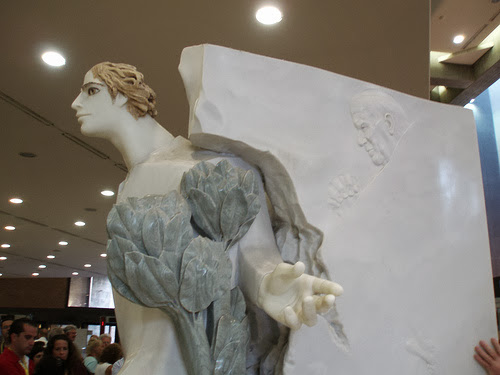
So, the sculpture invites us to enter.
It is generally accepted that the beginning of the collection of the Vatican Museums was laid at the dawn of the sixteenth century, when Cardinal Giuliano della Rovere, who bore the papal title from 1503 to 1513. under the name of Julius II, he ordered that valuable classical statues of Apollo and Laocoon be transferred to the Vatican and installed in the Belvedere Garden, converted into a courtyard.
Having passed the new main entrance to the Museum, inaugurated by John Paul II in 2000, we find ourselves immediately in the Cuirass courtyard, where you can admire the grandiose dome of St. Peter's Basilica, designed by Michelangelo. In the center of the courtyard rises the Antoninus Column, part of the monument erected in memory of about Emperor Antoninus Pius (138-161 AD)
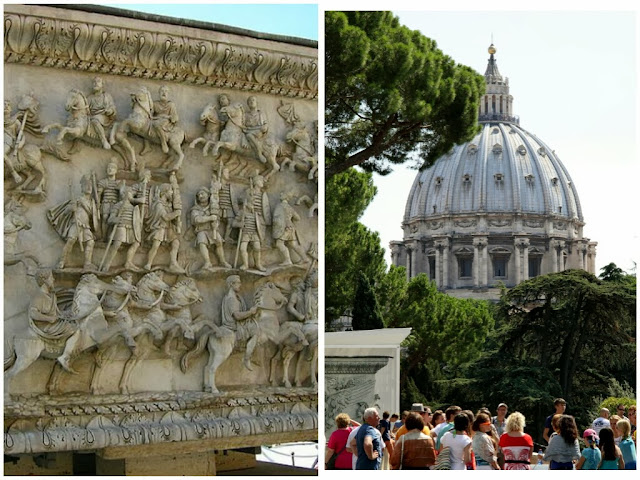
Further passing through the Atrium of the Four Gates, we find ourselves in the courtyard of the Pinecone - the extreme northern part of the huge inner courtyard of the Belvedere, designed by Bramante back in the Renaissance and stretching from the Papal Palace to the Palace of Innocent VIII (Cibo, 1484-1492), due to the construction of the library of Sixtus V (Peretti, 1585-1590) and the new Wing of Pius VII (Chiaramonti, 1800-1823), the courtyard was divided into three parts.
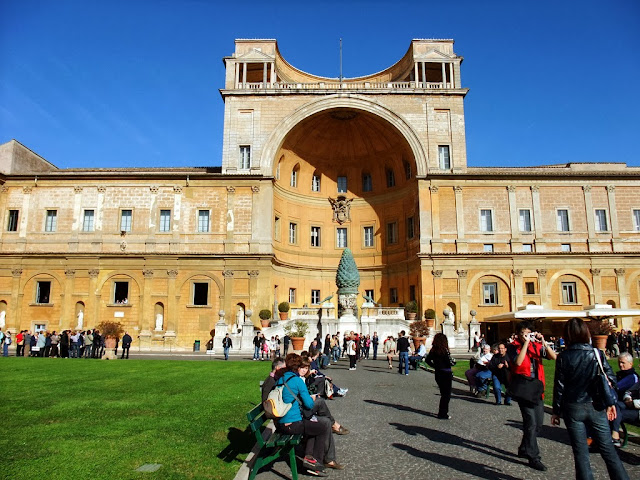
The cone, dating back to the 1st and 2nd centuries AD, was at one time the central figure of an ancient fountain located in the area of the Campus Martius, the waters of which erupted through countless holes hidden under the scales. Subsequently, the cone, as often happened with ancient works of art, was found different use, and it was installed in the center of the entrance atrium of St. Peter's Basilica, built by Emperor Constantine. It was covered with a luxurious canopy supported by four porphyry columns and decorated with bronze peacocks from the nearby Mausoleum of Hadrian, and was used as a fountain in which pilgrims performed their ablutions before entering the cathedral. There are now copies of peacocks in the courtyard; the originals are kept in the New Wing of the museums.
Here, in the center of the courtyard, you can see a spherical installation that arouses ongoing interest; it appeared in 1990. “Sphere with a sphere,” a work by the Milanese author Arnoldo Pomodoro, symbolizes, according to the author himself, the connection between the planet (a small ball) and the Universe ( large ball).The ball was purchased for the collection of Vatican landmarks under Pope John Paul II.

Then we enter the eastern wing of the Museums through the entrance in the corner of the courtyard to the right of the Pinecone. We enter the Chiaramonti Museum. A long, bright arched gallery will lead into the papal apartments. Now part of the collection of the Chiaramonti Museum is located here. Statues, sarcophagi, bas-reliefs and other objects of art of Ancient Greece and Ancient Rome, were located along the walls of the gallery. The museum owes its name to the founder Pope Pius VII from the Chiaramonti family. Immediately after his election as Pontiff in 1800, he issued a decree on the protection of works of art in the country. Owners of such objects contained in private villas and houses were obliged to declare his property. The famous Italian architect Antoni Canova was appointed by the Pope as Inspector General of Fine Arts. As part of Canova’s campaign, he bought works of art for the Vatican from Roman antiquarians. The collection was replenished due to archaeological excavations. The Gallery has more than 1000 exhibits.

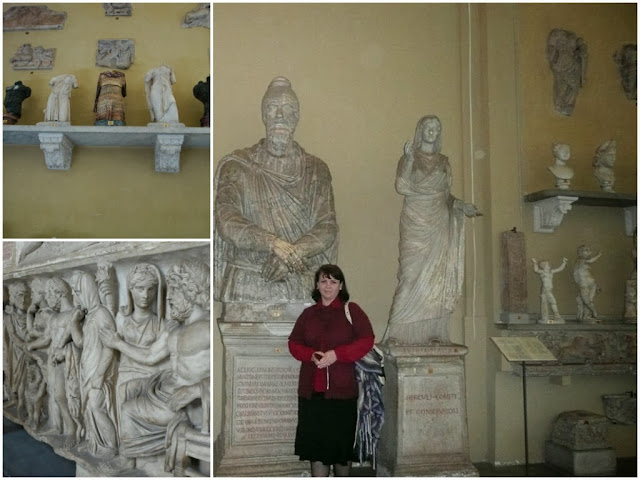
At the same time, the pope decided to add a perpendicular corridor to the gallery, but the idea was realized much later, in 1828, and by another architect Raphael Stern. Braccio Nuovo or New Wing - located to the right of the Chiaramonti gallery - a classic hall with antique columns and floor black and white mosaics 2nd century AD This room contains classical works of Greek and Roman art, divided thematically into two parts: Greek mythology and Roman history.
The most significant: Silenus and Dionysus (a copy of the original by Lysippos of the 4th century BC), a statue of the Nile with 16 “children” - tributaries, crocodiles and sphinxes (a Roman copy of a sculpture of the 1st century) as the personification of a river deity, the shepherd Ganymede and the eagle , sent by Zeus to kidnap him (Roman copy of the 2nd century BC from the original by Leochares of the 4th century BC).
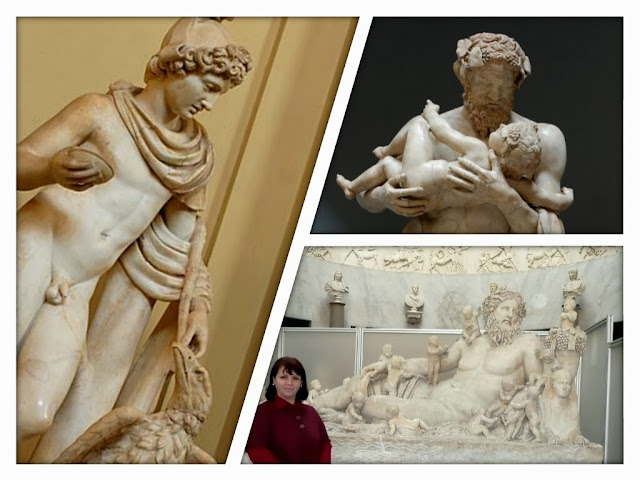
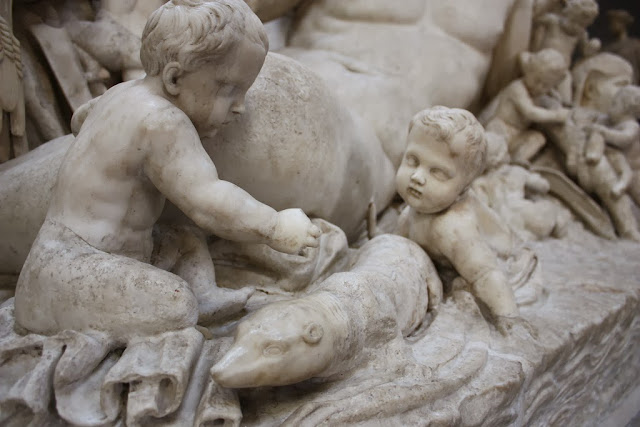
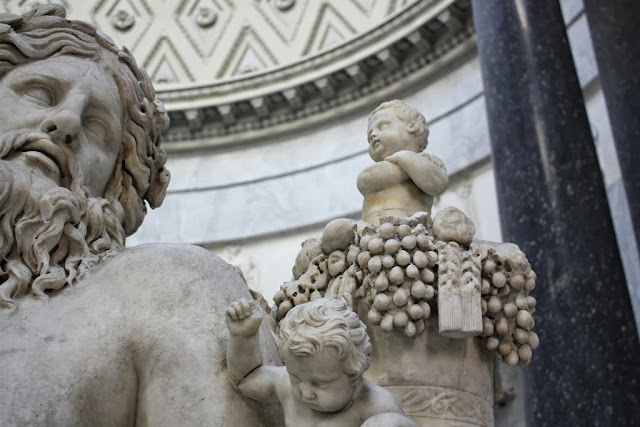
Also, a more than two-meter statue of Augustus, found in 1863 in the villa of Livia, the wife of Emperor Augustus. The villa was discovered near Rome on the Via Flaminia in the Prima Porta area. The statue of the 1st century AD is a copy of a bronze original, commissioned by the Roman Senate in 20 BC. BC It is believed that the statue, unlike most surviving images of Augustus, has a portrait resemblance. After his death, Augustus was officially ranked among the gods. Ancient tradition considered the divine Augustus the happiest of all Roman emperors.
Opposite the Nile are the original peacocks from the time of Emperor Hadrian, copies in the courtyard of Shishka.
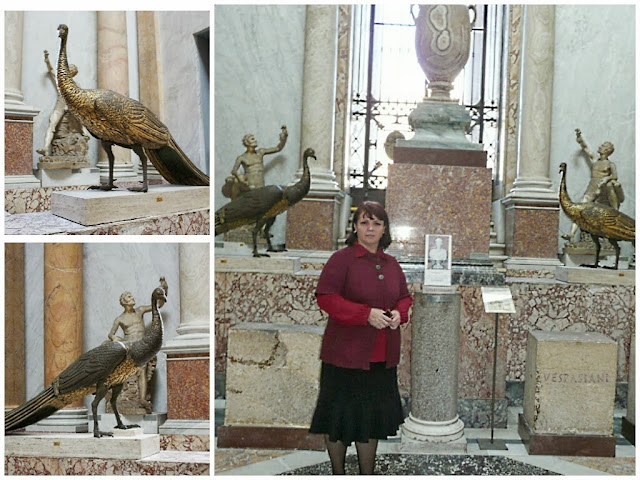
Continuing along the Chiaramonti Gallery, we reach the third branch of the museum, the Lapidaria Gallery. Access to the Gallery is permitted only by prior request and usually for educational purposes. The Gallery houses one of the world's largest collections of Greek and Roman inscriptions, consisting of more than 3,000 fragments. Wall on the left is devoted to inscriptions of Christian content, on the right are pagan texts. The exhibits were collected in the 18th century.
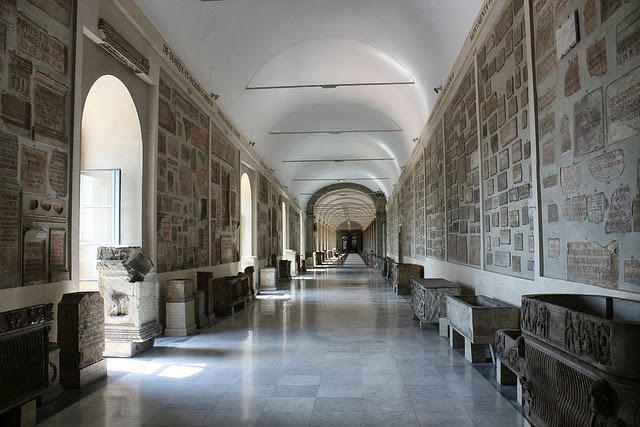
We return along the Chiaramonti gallery to the Simonetti staircase and, going up in a small square vestibule, we see a sarcophagus of the Etruscan era.
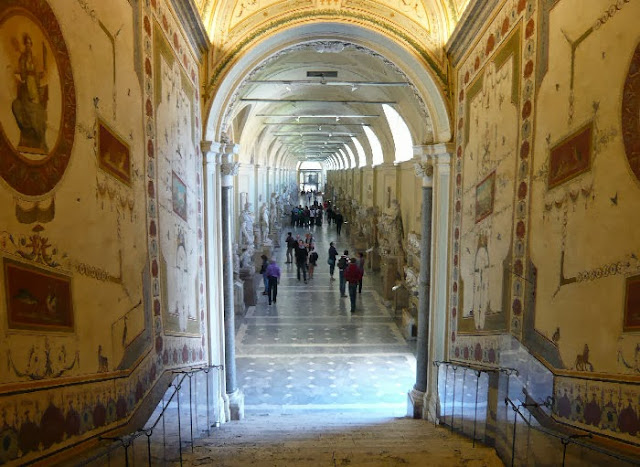
The sarcophagus of Lucius Cornelius Scipio Barbatus, 3rd century BC, is made of volcanic tuff, widely used until Rome “dressed” in marble thanks to its conquests in the East. It was found near the Appian Way. The Scipios belonged to the upper class of Roman society. From this dynasty came Scipio Africanus, the winner of Hannibal. (202 BC)
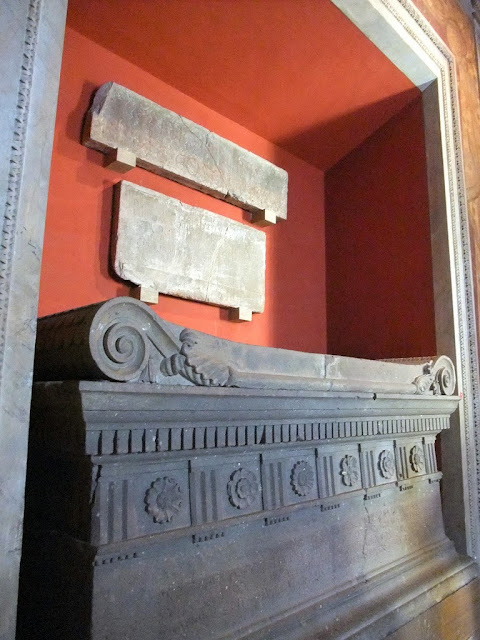
Having passed the Square Entrance Hall, we find ourselves in the Round Hall. From the Round Hall, conceived by Simonetti as a “connecting element”, the initial part of the Pius-Clementine Museum. The name of the museum combines the names of two pontiffs: Clement XIV (Ganganelli, 1769-1774), founder Museum of Pius VI (Braschi, 1775-1799) who gave it its final form. In the middle of the Round Hall is a huge garden bowl from the times of the Roman Empire.

From here you can admire an unforgettable panorama of Rome through the window, and we approach a small opening gallery where the statue of Apoximenes is kept. The ideal start to a journey into the world of statues at the Pius Clement Museum.
The statue was found during excavations of an Imperial-era building in the Roman quarter of Trastevere, post about Trastevere. The statue depicts an athlete at the moment when he, using a scraper, tries to cleanse himself of residual oil (applied by masters of fist fighting before a fight, in order to more easily slip out of hugging the enemy in battle) with sand and sweat clinging to the body. The statue is a copy in marble, dating back to the 1st century AD. from a bronze figure by the Greek master Lysippus (circa 330 BC), a favorite of Alexander the Great.
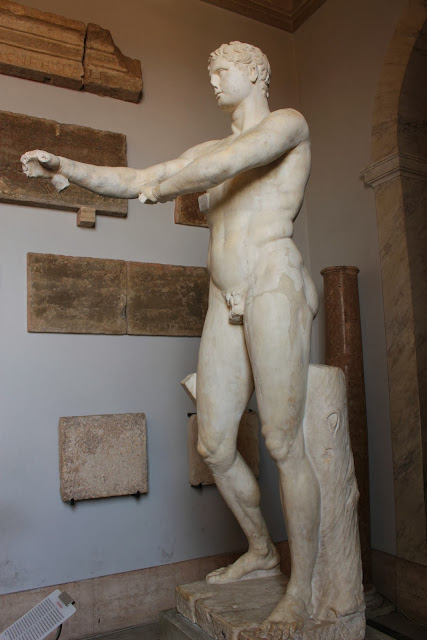
A little further is the Bramante staircase, the spiral flights of which are decorated with a granite colonnade, erected by order of Julius II (1503-1513). Its design allows it to be used even by horsemen, and the elegant columns that decorate each landing, starting from the lowest, are presented sequentially all three orders: Doric, Ionic and Corinthian.
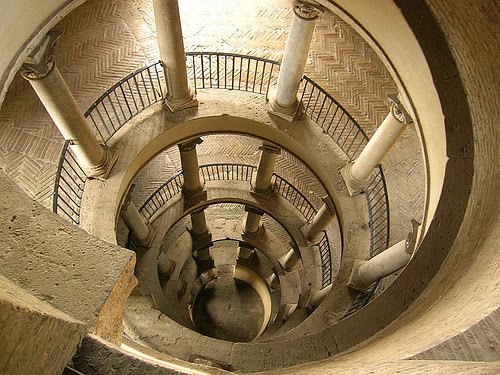
Turning back, we pass into the Octagonal Courtyard, the heart and historical core of the Vatican Museums. Initially, a square-shaped orange garden was laid out here, which was later turned by order of Julius II and according to the design of Bramante into a garden of statues. In the 18th century, Clement XIV ordered to enclose the open area with an octagonal portico , designed by Simonetti, thus giving it a look that has survived to this day. The shorter sides of the octagon are called “Cabinets”, and they house the most valuable statues that once adorned the ancient garden of Julius II.
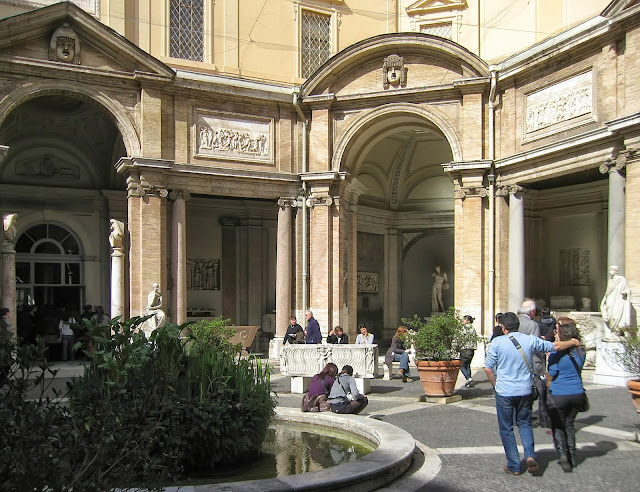
Let's start with the Cabinet of Apollo Belvedere, going around the portico of the courtyard clockwise. The sculpture, which appeared in the Vatican during the reign of Julius II and originally occupied one of the niches of the Garden of Statues, was admired in their time by Winckelmann, Goethe, and even earlier by Michelangelo. We are talking about a Roman copy from the era of Emperor Hadrian (II century AD) from a bronze original by the Greek master Leochares (IV century BC), installed on Agora Hill in Athens and depicting Apollo, as if unexpectedly appearing before an admiring viewer in all his divine greatness. Apollo, the god of music and poetry in ancient mythology, was usually depicted on Mount Parnassus, surrounded by Muse-goddesses who inspired Man in the main types of intellectual activity.

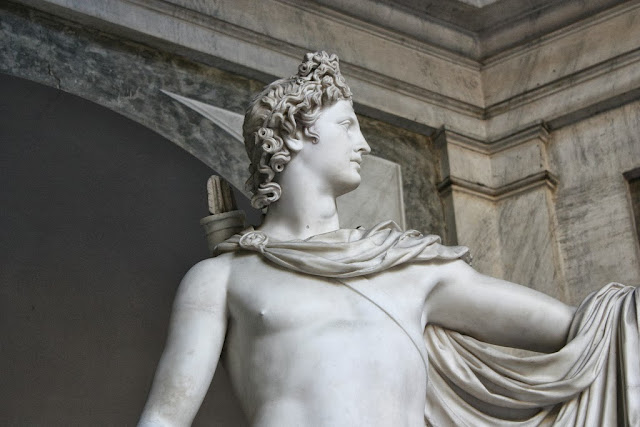
Notable in this sense is the painting of Parnassus by Raphael, located in the Stanzas of Julius II on the third floor of the papal palace. But at the same time, Apollo is a legendary warrior whose bow and arrows were truly deadly weapons: for example, in Homer’s Iliad he fought on the side of the Trojans against Greeks. The statue depicts a mythical god in this form. The statue, although a copy, provides us with the opportunity to appreciate the innovations and achievements of Greek sculptors of the 4th century BC, who achieved undoubted success in the art of conveying movement in three-dimensional space. 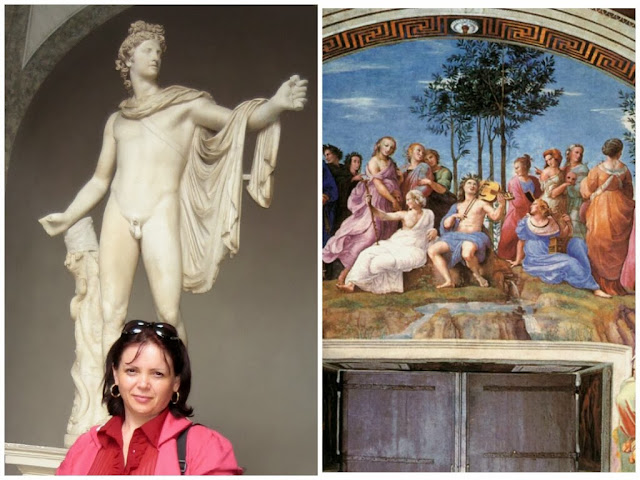
Moving clockwise we see the statue of Fume (also called "Arno") and the sarcophagus of Amazonomachy. The sculpture is a copy of the Hadrian era (2nd century AD) from the Greek original of the Hellenic era. During the heyday of Hellenism (starting from the 3rd century BC .) one of the main characteristics of the art of sculpture was thematic diversity: not only images of deities, mythical heroes, famous citizens, athletes characteristic of the classical period, but also figures of children, animals, material embodiments of natural phenomena, foreigners and barbarians. Statue of a river deity, is the fruit of many restorations and additions. The right hand and head of the statue, addition and restoration of the Renaissance. There are suggestions that Michelangelo supplemented and restored the statue.
Next is the sculptural group of Laocoon. According to legend, the priest Laocoon and his two sons were strangled by terrible snakes summoned from the depths of the sea by the goddess Athena and the god Poseidon. The priest objected to the transportation to the city of a wooden Trojan horse, left by the Greeks as a sacrifice to Athena, and pretended that they lifted the siege of the city, and even demanded that it be burned. The Trojans considered his death a sign from heaven and decided to accept the horse, inside which the Greek heroes were hiding, thus predetermining the sad fate of the city.
The legend of Laocoön has become a mythical warning to those who try to resist the inevitable: the fall and destruction of Troy was predetermined in heaven, and from the flames that devoured it, Aeneas, the progenitor of a new family of founders of Rome, was to rise. The sculpture was found in 1506, in the Esquilino area, in the area where the Golden Palace of Emperor Nero was once located.
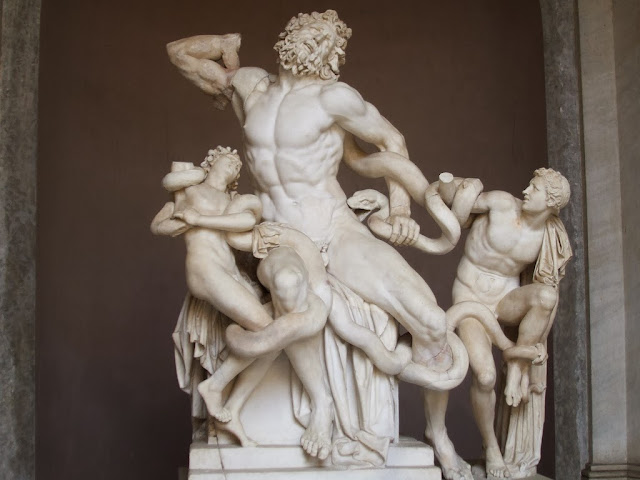
The work was immediately acquired by Julius II, who installed it in the famous garden of the Small Belvedere Palace, thus laying the foundation for a priceless collection of statues. Pliny the Elder, in his Natural History, mentions the sculptural group that decorated the palace of Emperor Titus, and even gives the names of the authors, the Greek sculptors Agesander , Polydorus and Athenodorus. The work is a Roman copy of the early imperial era, commissioned by the court of Emperor Tiberius (14-37 AD) from a bronze or marble Hellenic era original (2nd century BC). The right hand of Laocoon was found only at the beginning of the twentieth century by archaeologist Pollak, in a stonemason's workshop.

In the northern part of the portico we see the statue of Hermes Belvedere - a Roman copy of the era of Emperor Hadrian (2nd century AD) from a bronze original made by students of the great Greek sculptor Praxiteles (IV century BC). Hermes was the god of commerce: he patronized travelers, and his images in the form of columns topped with a bust (a kind of road pillars) were installed at the crossroads of road routes. But Hermes also accompanied the souls of the departed to the Kingdom of the Dead, and thanks to this he bore the name Psychopomp - “guide of Souls”, it is in this incarnation that he is depicted.
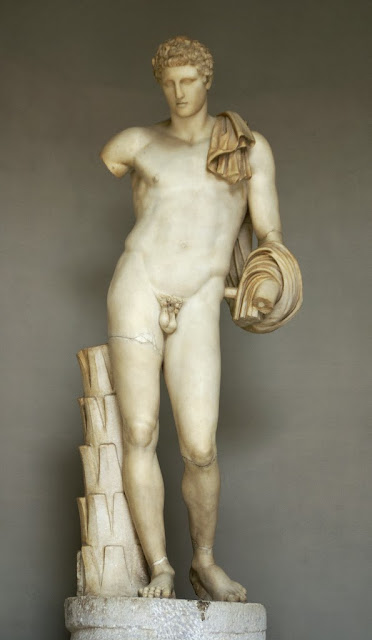
Here you can also see the statue of Perseus by Canova. Antonio Canova, one of the most significant figures of the neoclassical era, began work on Perseus to compensate for the loss of the ancient statue taken to Paris by Napoleon. In the early 19th century, when Perseus was commissioned by Pope Pius VII Chiaramonti, the Pius Museum -Clemente fell into complete disrepair due to French expropriations: the pedestals of the most famous statues were empty, the places of the rest were occupied by copies that replaced priceless originals. Therefore, the installation of Perseus in a niche that had been occupied by Apollo for almost three centuries, and the appointment of Canova as head of the Inspectorate of Affairs Antiquities and Fine Arts served as a demonstration of the Pope's intention to replace the loss of the museum's collection. Canova depicted Perseus, one of the most revered heroes of Greek mythology, at the moment when he cut off the head of the Gorgon Medusa with the sword given to him by Hermes.
